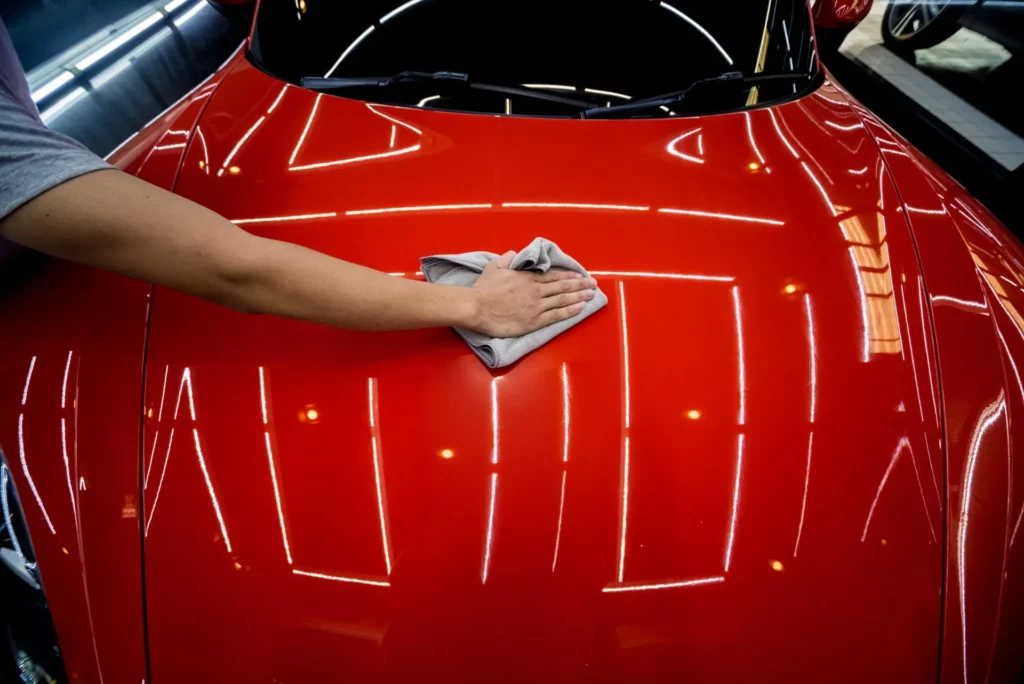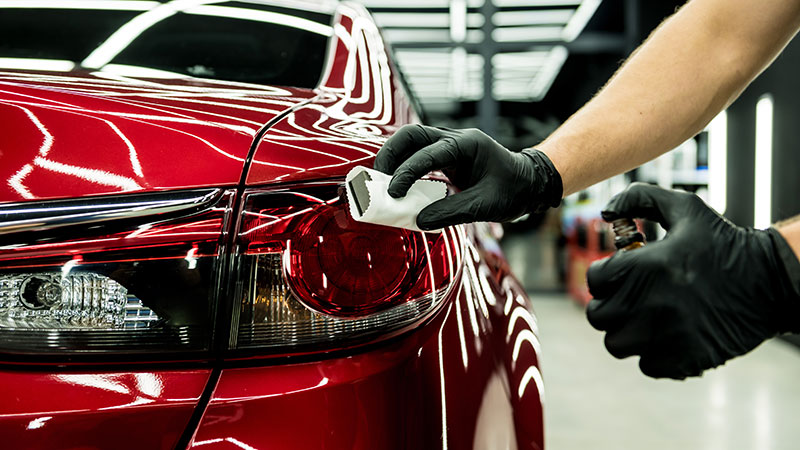Ceramic Pro: Ultimate Defense and Beam for Your Vehicle
Ceramic Pro: Ultimate Defense and Beam for Your Vehicle
Blog Article
The Scientific Research Behind Ceramic Covering: Exactly How It Improves Your Vehicle's Aesthetic and Resilience

Understanding Ceramic Finishing Chemistry
The chemical make-up of ceramic finishings plays an important function in identifying their longevity and protective residential or commercial properties on car surfaces. Ceramic coverings are usually comprised of silicon dioxide (SiO2), which is a main component giving firmness and heat resistance. Other ingredients such as titanium dioxide, silicon carbide, and polysilazanes are frequently contributed to improve particular residential or commercial properties like UV hydrophobicity, adhesion, and resistance.
Silicon carbide is known for its abrasion resistance, making the ceramic finish resilient and difficult against physical damages. Polysilazanes are made use of to enhance the finishing's flexibility and bond to the car's surface area, making sure durable defense. Comprehending the chemistry behind ceramic finishes is essential for both applicators and vehicle proprietors to value the value and benefits these finishings provide in maintaining the visual appeal and durability of vehicles.
Enhanced Gloss and Mirror-like Finish
Understanding the chemical composition of ceramic finishes not just reveals their protective residential or commercial properties but likewise clarifies exactly how they add to attaining an enhanced gloss and mirror-like surface on car surfaces. The trick to the shiny effect hinges on the nano-ceramic fragments existing in the finish. These bits complete tiny pores and imperfections externally, developing a smooth and degree finish. As light hits the covered surface, it shows consistently, providing the look of a deep, shiny luster. In addition, the chemical framework of ceramic coatings allows them to develop a solid bond with the vehicle's paintwork, avoiding oxidation and maintaining the clearness of the finish with time. This bond also withstands ecological pollutants, such as dust and grime, that can dull the shine of the vehicle. The mix of filling up residential properties, light reflection, and long-lasting protection makes ceramic layers a preferred selection for those looking for a vivid and mirror-like surface for their vehicles.

Impact on Paint Protection and Long Life
Ceramic coatings for lorries substantially enhance the longevity and defense of the paintwork. By forming a chemically resistant layer on top of the lorry's clear layer, ceramic layers act as an obstacle against different environmental impurities that can harm the paint over time.
In regards to longevity, ceramic layers supply a sturdy option compared to standard waxes or sealants. While waxes may last a couple of weeks to a few months, ceramic coatings can last years with proper maintenance. This extended lifespan not only minimizes the frequency of reapplications yet also saves time and effort in the future. Generally, the protective buildings of ceramic coatings add considerably to preserving the automobile's paintwork and boosting its aesthetic charm over an extended period.
Resistance to Contaminants and Rough Elements
With the safety shield given by ceramic coverings versus numerous ecological pollutants and elements, cars have the ability to preserve their beautiful appearance regardless of direct exposure to severe conditions. Ceramic layers develop a solid obstacle that pushes back water, dirt, dirt, and other common toxins, avoiding them from bonding to the vehicle's surface area. This hydrophobic nature not only makes cleaning simpler however additionally decreases the danger of water spots and etching triggered by acidic contaminants. Furthermore, the chemical resistance of ceramic coatings helps safeguard the paint from bird droppings, pest splatter, tree sap, and other corrosive substances that can damage the surface in time.
In addition, ceramic finishings provide UV protection, shielding the automobile's paint from the sun's unsafe rays that can create fading and oxidation. This resistance to UV damages aids keep the color intensity and sparkle of the paint for longer find out here periods. By forming a durable and resilient barrier, ceramic finishes make sure that the lorry's outside remains safeguarded versus a wide variety of contaminants and severe elements, maintaining its visual charm and durability.
Application Techniques and Maintenance Tips
For optimal outcomes when using ceramic finishes to lorries, utilizing appropriate techniques and sticking to recommended upkeep practices are crucial. The application procedure of ceramic covering requires interest to detail and accuracy. Prior to applying the ceramic finish, it is crucial to thoroughly clean and decontaminate the lorry's surface to ensure correct adhesion. This entails cleaning, claying, and possibly polishing the paint to produce a smooth canvas for the ceramic layer to bond successfully.
When applying the ceramic finish, it is recommended to operate in tiny areas to ensure also insurance coverage and to prevent the product from drying out too quickly. Utilizing applicator pads or microfiber cloths, apply the finishing in a crisscross or up-and-down movement, depending on the product's directions. After the coating is applied, allow it to cure for the defined time before buffing off any kind of deposit.
In regards to maintenance, regular washing with pH-neutral soaps and staying clear of abrasive devices or harsh chemicals will certainly help protect the ceramic finish's integrity. Routine inspections for any kind of damages or endure the covering can also aid preserve its safety residential properties gradually.

Conclusion
To conclude, ceramic finishing improves a lorry's visual appeal and durability with its chemical make-up, offering a glossy finish and safeguarding the paint from ecological impurities. Its resistance to harsh aspects and simplicity of upkeep make it a prominent choice for auto owners seeking to maintain the have a peek at these guys appearance of their vehicles. On the whole, ceramic finish is a scientifically backed remedy for keeping the appearance and long life of your vehicle.
Recognizing the chemistry behind ceramic coatings is important for both applicators and lorry owners to value the worth and benefits these finishings offer in maintaining the visual allure and longevity of vehicles. (ceramic pro)
Recognizing the chemical composition of ceramic coverings not only discloses their protective residential properties but also drops light on exactly how they contribute to attaining an enhanced gloss and mirror-like coating on car surface areas. By developing a chemically resistant layer on top of the vehicle's clear layer, ceramic coverings act as a barrier versus different ecological pollutants that can damage the paint over time. On the whole, the protective residential properties of ceramic coatings add dramatically to protecting the car's paintwork and boosting its visual allure over an extensive period.
In final thought, ceramic finishing like this enhances a lorry's aesthetic appeal and sturdiness via its chemical composition, offering a shiny surface and securing the paint from environmental pollutants.
Report this page